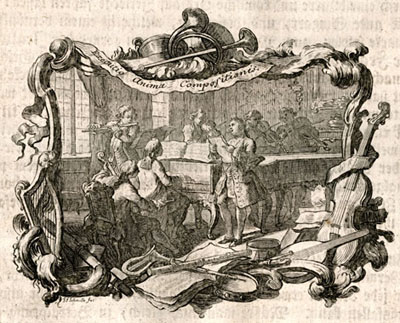|
The art of accompaniment
 |
A performance of a cantata with flute, violins and continuo, from Johann Quantz’s Versuch einer Anweisung die Flöte traversiere zu spielen ( Berlin: Johann Friedrich Voss, 1752). MR636.c.75.1
[item not on display]
|
The baroque era is characterised by the practice of improvising the keyboard accompaniment to instruments or singers from a figured bass (a bass line with numbers indicating the intended harmony). The collector F. T. Arnold was a student at Trinity College in the early 1880s. He was also a cellist and had a passion for baroque music, and after a lifetime of study and collecting, in 1931 published The art of accompaniment from a thorough-bass as practised in the 17th & 18th centuries, described by Ernest Newman in the Sunday Times as ‘the greatest work of musicology ever produced in this country.’ The exhibits in this case are drawn from Arnold’s personal collection, bequeathed to the Library in 1940. The collection forms one of the major bequests of music to the Library, and contains many of the theoretical sources for his monumental work, as well as a large number of instrumental chamber music scores featuring the continuo.
|
